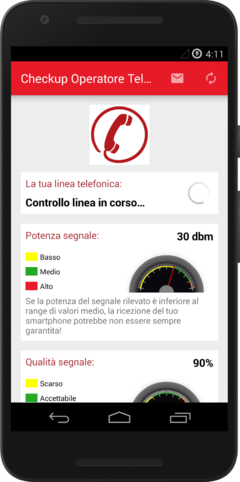Difference between revisions of "Malware"
m (cleaning) |
(moving section to backdoor) |
||
| Line 15: | Line 15: | ||
After a vulnerability was found in the Lenovo Solution Centre, [[Lenovo]] left it unfixed, but changed the software's end-of-life date to make it seem less important.<ref>https://www.theregister.co.uk/2019/08/23/lenovo_solution_centre_cve_2019_6177/</ref> | After a vulnerability was found in the Lenovo Solution Centre, [[Lenovo]] left it unfixed, but changed the software's end-of-life date to make it seem less important.<ref>https://www.theregister.co.uk/2019/08/23/lenovo_solution_centre_cve_2019_6177/</ref> | ||
| − | + | ==Hardware backdoors== | |
| − | + | {{FA|Backdoor}} | |
| + | Backdoors into the hardware of consumer PC's are possible and even likely to be used on a wide scale by [[intelligence agencies]], bypassing security monitoring on the level of the operating system. | ||
==Spyware== | ==Spyware== | ||
Revision as of 01:52, 4 December 2020
(software) | |
|---|---|
 One of many apps from the Google Play Store which secretly installed the Exodus spyware on its victims' phone. | |
| Interest of | • HBGary • Dragos Ruiu • Security Without Borders |
| Bad software, such as spyware or viruses | |
Malware is an umbrella term for bad computer software. Colloquially, this may include software which just unwanted, or annoying ("scumware", "nagware", "bloatware", "shovelware" etc.) but the primary meaning is software which by design presents a threat to the user, such as computer viruses or spyware. Malware in general is more associated with extortion of money and fraud, but it can be used by anyone with the technical capability for any purpose.
Contents
Pre-installed malware
In August 2019, Google warned that tens of millions Of Android smartphones come preloaded with malware, and that "if malware or security issues come as preinstalled apps, then the damage it can do is greater".[1] The problem with the presence of malware in the firmware dates back to early 2014.[2][3]
After a vulnerability was found in the Lenovo Solution Centre, Lenovo left it unfixed, but changed the software's end-of-life date to make it seem less important.[4]
Hardware backdoors
- Full article: Backdoor
- Full article: Backdoor
Backdoors into the hardware of consumer PC's are possible and even likely to be used on a wide scale by intelligence agencies, bypassing security monitoring on the level of the operating system.
Spyware
- Full article: Spyware
- Full article: Spyware
Spyware is created to exfiltrate users' data or facilitate surveillance of users. Its origins include criminal gangs, individuals, private companies[5] and intelligence agencies.
Viruses
- Full article:
 Computer virus
Computer virus
- Full article:
Computer viruses may go beyond spying to have a payload intended to destroy data and/or hardware (for example, Stuxnet, intended to damage the Iranian centrifuges used to refine uranium).
Installation
"AT&T employees took bribes to unlock millions of smartphones, and to install malware and unauthorized hardware".[6]
Examples
| Page name | Description |
|---|---|
| Backdoor | A covert means of gaining unauthorised and/or unmonitored access to a computing system. |
| Computer virus | |
| Fysbis | A simple yet effective Linux Trojan. |
| Ransomware | |
| Spyware |
Related Quotation
| Page | Quote | Author | Date |
|---|---|---|---|
| Backdoor | “Every year, we learn about some issue in WhatsApp that puts everything on their users' devices at risk. Which means it's almost certain that a new security flaw already exists there. Such issues are hardly incidental – they are planted backdoors. If one backdoor is discovered and has to be removed, another one is added” | Pavel Durov | 5 October 2022 |
Related Document
| Title | Type | Publication date | Author(s) | Description |
|---|---|---|---|---|
| File:Operation-shady-rat.pdf | report | 2 August 2011 | Dmitri Alperovitch |
References
- ↑ https://www.forbes.com/sites/zakdoffman/2019/08/10/google-warning-tens-of-millions-of-android-phones-come-preloaded-with-dangerous-malware/
- ↑ https://securelist.com/caution-malware-pre-installed/59356/ saved at Archive.org saved at Archive.is
- ↑ https://public.gdatasoftware.com/Presse/Publikationen/Malware_Reports/G_DATA_MobileMWR_Q2_2015_EN.pdf saved at Archive.org
- ↑ https://www.theregister.co.uk/2019/08/23/lenovo_solution_centre_cve_2019_6177/
- ↑ For example, eSurv which created the Exodus spyware
- ↑ https://archive.fo/djFGd